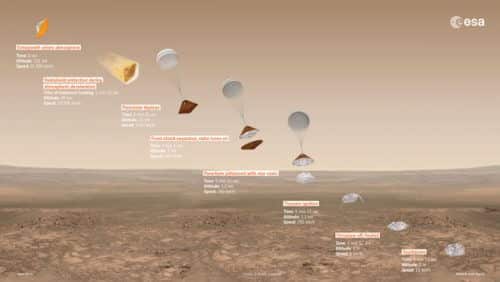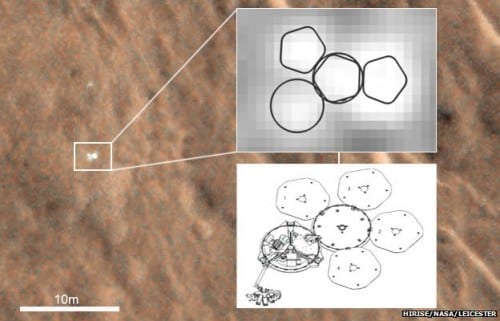So said Prof. Yoav Yair, Dean of the School of Sustainability at the Herzliya Interdisciplinary Center as part of a conference titled "Sustainability, Life and Outer Space - The Future of the Human Race and the Journey to Mars"

"Accidents in space are inevitable. You should learn from them but not shy away." This is what Prof. Yoav Yair, dean of the School of Sustainability at the Interdisciplinary Center Herzliya said as part of a conference entitled "Sustainability, Life and Outer Space - The Future of the Human Race and the Journey to Mars" that took place this week at the Interdisciplinary Center.
"Mistakes happen, a general generic law, the basis of what is known today as Murphy's Law. Even if the planners do their best and the staff members are competent, something will always go wrong." Prof. Yair explains.

Dangers of long space flights
"Space is a hostile place. We were not born to live in the space of our bodies, our brains and our entire being were not meant to live in outer space, and therefore we wear space suits, a life support system that protects us from temperature, provides us with oxygen, and protects us from radiation. "
"The known danger is solar flares and cosmic radiation without the protection of the atmosphere and the radiation belt that takes care to block most of the ultraviolet light and only the most energetic particles manage to penetrate. Another danger comes from collisions with micro meteorites and space debris which are like projectiles moving at high speed. And of course there is the need to deal with the lack of gravity and sharp temperature changes between day and night, or the side facing the sun versus the far side. Limited supply of resources everything is recycled. "
"As if all these were not enough, there are unexpected dangers arising from the length of the journey - the road to Mars takes about eight months, provided that the launch is when the Earth catches up with Mars in its orbit and the spacecraft gains momentum. In interplanetary space there is no atmosphere, and there is no protection against cosmic radiation. Therefore, this should be taken into account, and the crew members should be warned of an approaching storm with the help of data from many satellites that study the sun."
Impact of dangerous cosmic dust particles - damage to the solar panel of the Sentinel 1A satellite in 2014. The size of the impacting particle was 5 mm, but a spot with a diameter of forty centimeters was formed on the panel.
Another malfunction when the spacecraft is in space or on Mars is that of a malfunction that will neutralize or cut off communications from mission control on Earth, and the astronauts will have to manage on their own.
And when we passed all these and reached Mars, there too, a considerable danger awaits us. On Mars, large dust storms occur that transport very large amounts of particles in the air. The electric fields accompanying the storm damage the communication between the lander and the relay satellites orbiting Mars and disrupt the operation of the instruments.
"Also, solar panels that are used as a central energy source may become covered with thick layers of dust that will reduce the power and harm the spacecraft's activity."

Mars - a spacecraft graveyard
Mars is a spacecraft graveyard. Out of 38 landing attempts, only 19 ended successfully. All the other spacecraft either crashed on the ground due to a malfunction during the take-off phase, or were lost on the way and passed by Mars, and most of them crashed on Mars.
MARS 96 was an advanced Russian spacecraft designed to enter the coffee orbit and land a lander and two detectors to explore the subsurface on Mars. A malfunction in the Proton launcher caused the spacecraft to fall back to Earth and crash in South America. The cause of the malfunction is still unknown. About 200 grams of enriched uranium 238 have not yet been found.
The Mars Climate Orbiter launched in 1998 was designed to study the planet's climate and decipher the vertical structure of the atmosphere. The entry into the orbit was made at a lower altitude than planned and the spacecraft crashed. The mistake was due to a mismatch between decimal units and US units, with each team using different measurements. This error resulted in a failure of the navigation software, descent and crash. (As a result of this malfunction, NASA decided to switch to using AB decimal units)
MARS POLAR LANDER launched in 1999 was designed to land near the south pole of Mars and study the ice cap. Right before landing, contact with it was lost and the spaceship was lost. The investigation revealed that the landing software made a mistake in detecting the height above the surface, it turned off the braking rockets at a height of forty meters because it interpreted a slight change in acceleration due to the opening of the spacecraft's legs as if it had already reached its destination and the spacecraft crashed. The remains of the spacecraft were found after five years.
Beagle 2 - a lander of the European Space Agency that was launched together with the Mars Express spacecraft in 2003, was supposed to land using a parachute and airbags and investigate possible signs of life. Separation from the mother spacecraft was carried out correctly, however, near the launch, the connection was lost and the spacecraft disappeared. It is not clear what went wrong. The remains of the spacecraft and the parachute were found in 2013 in a photograph of the MRO spacecraft (see image). The spacecraft landed safely but was unable to make contact because the antenna was jammed and the solar panels did not deploy.
And the most recent Exo-Mars spacecraft that was launched in 2016, Anamura was to land some experiments on the space probe and make meteorological and geological observations. The spacecraft made a normal entry into the atmosphere, but crashed on the ground, probably due to falling at high speed.
Later, Prof. Yair, who was the coordinator of the Israeli experiment on the space shuttle Columbia, which crashed landing with the Israeli astronaut Ilan Ramon in it, described the series of disasters in which astronauts and cosmonauts perished. see An extensive overview of all the disasters I have prepared (editor of the Hidan site, Avi Blizovsky) in 2003 following the Columbia disaster

8 תגובות
wave
One of the reasons for the failure at the embassy was that all the spare parts were on one of the planes. And this is one of the first planes that broke down on the way.
Regarding the engines: two engines do not necessarily guarantee redundancy. In your idea - for the purpose of demonstrating the risk - there are essential components in every spaceship. Therefore, any malfunction in one of the spaceships will endanger the crew. Just an example - food poisoning in the desperate spaceship.
The "simple" solution is three full spaceships, including full crews.
What I'm trying to say is, redundancy is a much more complex thing than it seems. I will give you an example from my experience. Fighter planes have sophisticated control mechanisms that monitor the health of the plane's systems. There are cases where the control systems are more complex than the controlled system. The result - false alerts due to malfunctions in the control system. Unfortunately, this is not a rare phenomenon, and in my case, it has already reached a "wolf wolf" situation: a certain system repeatedly reported a certain malfunction, and when it once really happened... I ignored it.
There are better solutions than all the ideas that have come up here that increase the chances of a successful journey:
1. In the first step, unmanned spaceships are sent which will land the supply on the planet before sending the people. As soon as the planet has a supply one element is already certain.
There is even thought to send robots to do preparatory work before the arrival of a manned delegation
2. The manned expedition will leave in several stages
with several vehicles.
See the Spacex video that nicely illustrates the idea
Miracles,
The idea is general, and I have not explored it in depth.
1. It seems that due to the hasty planning to save the embassy personnel, there was also a failure, and a human error,
in the execution of the rescue.
I don't get along so well with the 3 spaceships.
2. When the food spaceship explodes, 2 more spaceships will be left with a limited food supply that will allow
survive…
3. Regarding a twin-engine plane, I don't understand what it has to do with it?, I wrote about 3 separate spaceships
Each has its own engine
wave
Your idea is good, but there is a great danger in it - ask the Americans what happened to them in the attempt to rescue the embassy in Iran (1980). The problem is that you don't necessarily lower the risk! Now there are 3 spaceships, and the chance of a malfunction has tripled...
I think you noticed that when you said that each spaceship can hold all the people. But - what will happen if the spaceship with the food explodes?
There are such situations in fighter planes. For example - the F-16 has 4 steering computers, but all four are located in one box. If this box is hit by a missile, the whole plane is gone. The solution is simple: place the box close to the pilot...
Another interesting case is the issue of one or two engines. It seems on the face of it that two are better. But be aware: a twin-engine plane is more likely to malfunction. And the important point: when flying in enemy territory there is almost no chance of a twin-engine plane having an engine lay down.
Again, the idea is good, but it's a lot more complicated than it sounds.
To increase the chances of survival in space for interplanetary flights
It is desirable to send 3 spaceships in a relatively close structure instead of one spaceship
Spacecraft 1 for the crew with the required shielding in relative comfort
Spacecraft 2 food supply, and excess air
Spacecraft 3 technical equipment
It will be possible for the team to move from spacecraft to spacecraft
Each of the spaceships can be used as a shelter for the crew in case of a malfunction
What translation? The lecture was in Hebrew.
The Mars Climate Orbiter segment makes me laugh every time
Lots of wisdom and knowledge - not enough common sense
I like the articles on the site, but the translation of this article is simply difficult to read.. or correct or download.